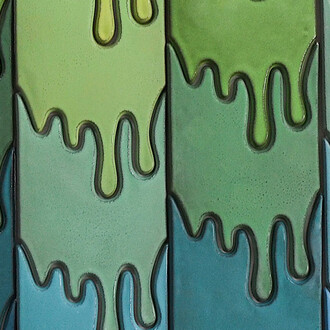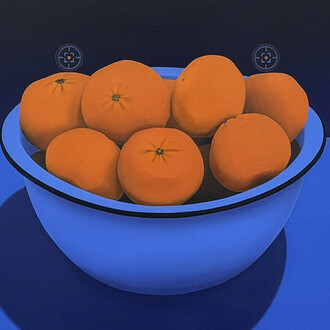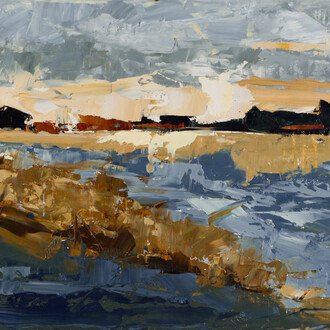Palo Gallery (New York) is pleased to present Psychopomp, the debut solo show of a new body of 10 paintings by emerging British artist Xanthe Burdett. Referencing mythological spirits who guide souls to the afterlife, this exhibition creates a space where the natural and supernatural intersect.
In Psychopomp, Burdett invites viewers into her imagined world where human and nonhuman forms collide and coexist. Her paintings are charged with a quiet yet restless energy, exploring encounters with the unknown through gestures that feel both instinctive and precise. While traces of trees and plant forms appear, Burdett avoids literal depiction, creating compositions that hover outside of time and the familiar.
Working in multiple formats, Burdett’s practice examines the relationships between bodies, plants, and the earth itself. In the painting Voices Caught in the Earth, human forms emerge from the soil, while curling fronds unfold into faces. These hybrid, non-anthropocentric worlds celebrate the vitality of plants and the strange stories humans create to make sense of the unknown world. Burdett employs distinct techniques for her large-scale paintings and smaller works on panels. Inspired by the practices of Renaissance fresco painters, she begins by sketching her figures from live models, which she then photographs and redrafts on paper before transferring the compositions to canvas with chalk.
The figures are painted in white gesso and layered with vivid green washes, producing an ethereal glow, as if existing behind a veil. She finishes each piece with detailed facial features and foliage, uniting human and plant forms in a single, fluid composition. Burdett’s smaller works, paintings on panels, feature marbled oil finishes akin to gold leafwork. Here, Burdett allows the materials to guide the work, sprinkling solvents onto thin oil washes to create speckled, unpredictable textures. Layers of glaze add depth and richness, resulting in works that are at once luminous and earthy while echoing the subterranean worlds they depict.
In Psychopomp, the works draw on myth, art history, and folklore, referencing religious icons, medieval illustrations of mandrakes, and underworld tales. Burdett’s use of soil as a subject opens a portal to parallel worlds. She does not simply depict myths but brings them to life, allowing ancient parables to speak through gesture, color, and texture. The result is a world that feels alive and porous, where boundaries between self and other, life and afterlife are fluid. The paintings invite viewers to pause at this threshold and experience the strange and beautiful unknown.
















